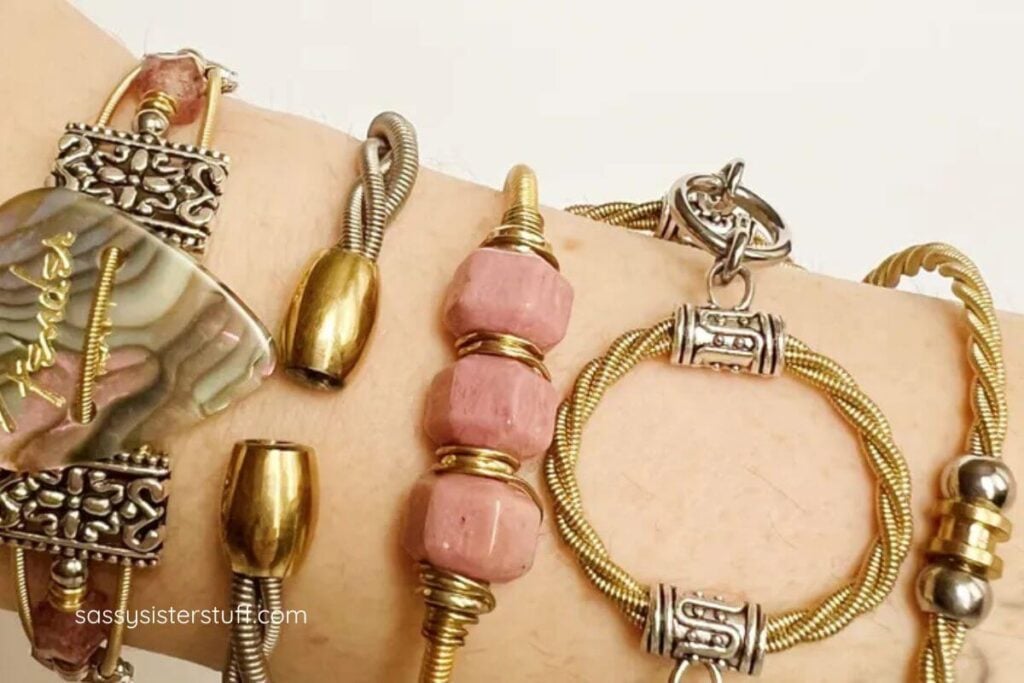10 Must-Follow Rules for Giving Art as a Gift
Over recent months, we’ve been exploring 5 Senses Gifts here at Sassy Sister Stuff. Below, you’ll find a great guide for giving art as a gift—a wonderful gift for sight. A meaningful piece of art can be perfect for a friend or loved one, but when it comes to giving these unique (and subjective) gifts, there are rules to follow.
Art has the unique ability to capture emotion, tell a story, and create lasting memories. Giving art as a gift can be a deeply personal gesture, offering a tangible expression of love, appreciation, or connection.
However, choosing or creating the right piece can feel daunting. Whether you’re sharing art you’ve made yourself or selecting a stunning work from a talented artist, there are must-follow rules for giving art as a gift.
We’ve divided these rules into two categories to help you confidently create or purchase art that will truly touch the heart of your recipient.

Gifting Creativity: The Art You Made
Giving art as a gift can sometimes be challenging, but it can bring such joy to the recipient if done right. It’s also a great way to support creatives who dedicate themselves to the arts. Let’s look at how you can successfully share the art you create.
1. Know Your Recipient’s Style
When creating art, start by thinking about the recipient’s tastes and preferences. Are they drawn to bright, bold colors or more neutral tones? Do they prefer abstract pieces or more realistic renderings?
Reflect on their home décor or their personality to guide your creative choices. A vibrant abstract painting may feel perfect for one friend but overwhelming for someone with a minimalist aesthetic.
2. Infuse the Gift With Meaning
Art becomes even more special when it tells a story or holds sentimental value. Consider weaving personal elements into your piece, such as themes that remind you of a shared memory.
A hand-painted landscape of a favorite vacation spot, for example, carries emotional weight. These details transform your gift beyond its aesthetic appeal, making it a vessel of shared experiences and feelings.
3. Pay Attention to Quality
Even if the art is handmade, it should feel polished and complete. Use quality materials such as durable canvases, archival ink, or vibrant, fade-resistant paints.
Presentation matters, so take steps like framing your artwork or adding finishing touches. A beautifully presented piece will feel more like a gift and less like an unfinished project. This also ensures the art stays in good condition for years to come.
4. Consider Practicality
Think about where your art will fit into their life. Is it meant to hang in a living room, brighten a workspace, or bring joy to a cozy reading nook? Keep its size, weight, and use in mind as you create it.
Pieces that are too bulky or fragile might be harder for some recipients to enjoy. Be thoughtful about how the person lives and what type of art blends seamlessly with their space.
5. Write a Personal Note
The thought behind a handmade gift deserves acknowledgement. Pair your art with a thoughtful handwritten note. Explain the inspiration behind the piece and why you believe it’s meaningful for them.
This small touch adds warmth and makes the gift feel intimate. It also gives your recipient a peek into the creative process, which can enhance their connection to the artwork.

Supporting Local Creatives: The Art You Bought
Now let’s look at giving art as a gift when it’s made by a creative. Art does not just need to be a visual wall hanging—jewelry is a form of art that can be unique and beautiful. I make jewelry and give it to friends as gifts for special occasions, and I admire the work of Rethrive Designs. They make jewelry out of gemstones and guitar strings. What I’m trying to emphasize is don’t limit yourself to traditional artwork when giving the gift of art.
Additionally, get to know creative artists of all kinds in your local area so you can support them. Creatives work very hard and have great passion for their art. I also like to buy jewelry or wall art from local artists when I travel. One of my all-time favorites is Barbara Lavallee from Alaska!
6. Start With Their Preferences
When buying art, begin with an understanding of what your recipient loves. Focus on the colors, themes, or styles they naturally gravitate toward. Do they collect specific types of artwork, like prints of flowers or vintage illustrations?
By keeping their preferences top of mind, you reduce the risk of giving something that feels out of place in their home. A personalized choice makes a strong impression and shows you’ve genuinely thought about their taste.
7. Consider Practicality in the Purchase
Some types of art have the same design available in different sizes. For example, glass-blown hearts are delicate and gorgeous gifts that you can find in sizes as small as buttons or as large as grapefruits.
Knowing how your recipient might use or display these glass-blown hearts helps you select one that’s the right size and weight. Always think about practicality with the art you purchase; you don’t want these pieces to become an inconvenience. A practical, well-suited piece makes the gift not only meaningful but also functional.
Pin to Pinterest for Later
8. Understand the Artist or Source
When buying artwork, take the time to learn about the artist or seller. Purchasing pieces from independent artists or local galleries supports creative communities and adds a layer of authenticity to your gift.
Many artists include certificates of authenticity or notes explaining the inspiration behind their work. Sharing these details with your recipient makes the piece even more special.
9. Provide the Tools for Display
A piece of artwork is most impactful when the recipient can enjoy it immediately. If you’re gifting a painting or print, be sure to frame it or install hanging hardware before exchanging it.
For sculptures or decorative objects, consider stands or bases if necessary. This attention to detail removes any hassle for your recipient and allows them to immediately showcase the gift in their space.
10. Aim for Timelessness
When selecting art, avoid following fleeting trends that may not age well over time. Look for classic or versatile designs that have enduring appeal.
Timeless pieces, whether it’s a serene landscape, a whimsical figure, or a bold yet sophisticated abstract, are less likely to feel outdated as years go by. Choosing something timeless ensures your gift remains a cherished part of their environment for a long time.
Current Interests vs. Timelessness
The need to pick out a piece that will always fit well within their home can contradict the need to choose something that fully suits their interests. Many people have interests that last for only a few years or even just a few months.
Consider how your recipient engages with their current interests—are they already buying décor, accessories, or fashion items themed around the interest? If so, they will likely appreciate a gift that is less timeless and more timely!

Final Thoughts: Give Thoughtfully and Create Memories
Giving art as a gift is a meaningful way to show love, gratitude, or admiration. By following these must-follow rules for giving art as a gift, you ensure that the recipient feels seen, appreciated, and connected to you through your selection or creativity.
Whether you’re crafting something from the heart or purchasing a masterpiece, the thought and intention you put into your choice ultimately make your gesture unforgettable.
With these guidelines in hand, you can confidently create or choose art that doesn’t just decorate walls and spaces (or enhance a beautiful outfit on your bestie:) but also nurtures relationships, adds beauty to someone’s life, and celebrates your connection.
If you enjoy 5 Senses Gift Giving, you’ll love these Related Articles:
- 37 Creative 5 Senses Gift Ideas for Sound She’ll Love
- 5 Senses Gift Ideas: Incredible Gifts for Your Midlife & Senior Besties
- Scents to Boost Your Confidence and Energize Your Day
Happy gift giving!!
Love to ALL! ~ Susan







